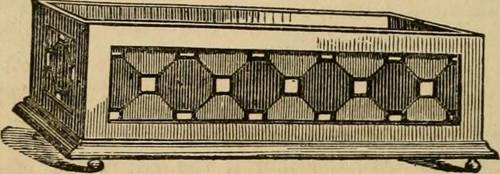
FAQ About Indoor Plant Nutrient Lockout Solutions

What is nutrient lockout in indoor plants?
Nutrient lockout in indoor plants occurs when essential nutrients are present in the growing medium but the plant roots cannot absorb them. This can happen due to pH imbalances, excessive nutrient concentration, or the presence of antagonistic nutrients.

How can I diagnose nutrient lockout in indoor plants?
Diagnosing nutrient lockout involves observing the symptoms such as yellowing leaves, stunted growth, or leaf drop. Testing the pH level of the soil or hydroponic solution and checking for salt build-up or excessively high EC (electrical conductivity) can also help confirm nutrient lockout.

What causes nutrient lockout due to pH imbalances?
Nutrient lockout due to pH imbalances occurs when the pH level of the soil or water is too high or too low, making certain nutrients unavailable to plants. Each nutrient has a range of pH in which it can be absorbed, and any deviation can lead to lockout.

How can I fix nutrient lockout caused by excess nutrients?
To fix nutrient lockout caused by excess nutrients, you can flush the growing medium with water to wash out the excess salts. Ensure the water is pH-balanced to avoid further imbalance. After flushing, resume a properly balanced feeding schedule.

Can overwatering lead to nutrient lockout in indoor plants?
Yes, overwatering can indirectly cause nutrient lockout by leading to root oxygen deprivation, which hampers root function and nutrient uptake. Also, overwatering can cause nutrient leaching, further contributing to the problem.

What role does pH play in nutrient uptake for indoor plants?
pH affects the solubility of nutrients in soil or water, determining which nutrients are available for plant uptake. A pH level outside of the optimal range can render essential nutrients insoluble, leading to nutrient deficiencies despite adequate nutrient levels.

How often should I test the pH of my indoor plant's growing medium?
Testing should be done periodically, depending on plant sensitivity and growing conditions. For most indoor plants, testing once a month may suffice, but more frequent checks are recommended if issues occur, like changes in growth patterns or leaf appearance.

What tools can help diagnose nutrient lockout?
pH meters, EC meters, and soil test kits can help diagnose nutrient lockout by measuring soil acidity, electrical conductivity, and nutrient concentrations. Visual inspection of plant symptoms also aids in diagnosis.

Should I adjust nutrient concentrations when experiencing nutrient lockout?
Yes, adjusting nutrient concentrations can help. If the nutrient levels are too high, dilution might be necessary. However, it's important to flush the medium first and then apply a balanced nutrient solution to avoid exacerbating any lockout issues.

What are symptoms of nutrient lockout in indoor plants?
Common symptoms include yellowing or browning leaves, stunted growth, leaf curling, and wilting. Plants may also show specific nutrient deficiency symptoms, despite nutrients being present in the growing medium.

How does electrical conductivity (EC) relate to nutrient lockout?
Electrical conductivity (EC) measures the total salt concentration in the soil or solution. High EC indicates excessive nutrients, which can lead to lockout by overwhelming the plant roots, inhibiting nutrient uptake.

Can nutrient lockout affect all types of indoor plants equally?
Nutrient lockout can affect all indoor plants but the sensitivity varies. Some plants, like orchids or succulents, have specific requirements and are more sensitive to pH and nutrient changes than others.

How long does it take to resolve nutrient lockout in indoor plants?
The time needed to resolve nutrient lockout varies depending on the severity and corrective measures taken. Typically, improvement can be seen within a week if corrective actions are properly implemented, though it may take longer for plants to fully recover.

Can commercial nutrient solutions prevent nutrient lockout?
Commercial nutrient solutions formulated with balanced pH and nutrient ratios can help prevent nutrient lockout. Regularly monitoring and adjusting these solutions as needed ensures they don’t contribute to pH imbalances or nutrient overloads.

Is it necessary to change the growing medium after experiencing nutrient lockout?
Changing the growing medium is not always necessary, but it can be beneficial in severe cases where flushing and adjusting nutrient levels don’t resolve the issue. However, it’s important first to attempt remedial actions like pH adjustment and flushing.

What is the ideal pH range for nutrient uptake in most indoor plants?
The ideal pH range for most indoor plants is generally between 5.5 and 6.5. This range allows for optimal nutrient solubility and uptake, minimizing the risk of nutrient lockout.

Can nutrient lockout occur in hydroponic systems?
Yes, nutrient lockout can occur in hydroponic systems due to pH imbalances, incorrect nutrient dosing, or insufficient oxygen levels in the water, all of which can prevent plants from absorbing the available nutrients.

How do I balance the pH in my plant’s growing medium?
To balance the pH, you can use pH up or down solutions that are specifically designed for horticultural use. Additionally, organic methods like adding lime to raise the pH or sulfur to lower it can be effective.

What are the effects of nutrient lockout on indoor plant health?
Nutrient lockout can lead to nutrient deficiencies, resulting in poor plant health, stunted growth, discoloration, and in severe cases, plant death if not corrected appropriately. Long-term lockout can diminish the plant's resilience to pests and diseases.

Is nutrient lockout reversible in indoor plants?
Yes, nutrient lockout is usually reversible through corrective actions such as flushing the growing medium, adjusting pH and EC levels, and ensuring proper nutrient concentrations are maintained going forward.
